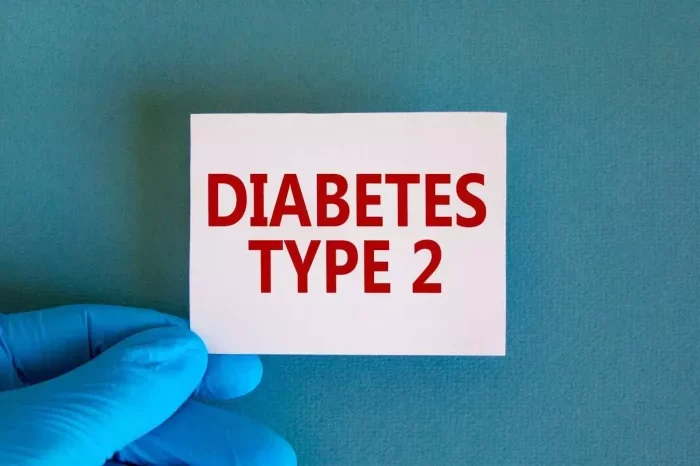Type 2 diabetes mellitus (T2DM) is a chronic metabolic disorder characterized by insulin resistance and relative insulin deficiency, leading to hyperglycemia. It is a major global health concern, affecting millions of people worldwide. Effective management of type 2 diabetes is crucial to prevent complications such as cardiovascular disease, nephropathy, retinopathy, and neuropathy. Among the various medications available for managing T2DM, metformin stands out as the most widely prescribed and researched. This article will delve into the reasons behind metformin’s popularity, its mechanisms of action, benefits, side effects, and its role in the comprehensive management of type 2 diabetes.
History and Development of Metformin
Metformin, chemically known as 1,1-dimethylbiguanide hydrochloride, is derived from the French lilac (Galega officinalis), a plant used in traditional medicine for centuries. The active compound, guanidine, was discovered in the early 20th century, but its therapeutic use was initially limited due to toxicity. In the 1950s, metformin was developed and introduced as a safer and more effective biguanide. It was first approved for clinical use in France in 1957 and later in the United States in 1994. Since then, it has become the cornerstone of type 2 diabetes management.
Mechanisms of Action
Metformin exerts its glucose-lowering effects through multiple mechanisms:
Inhibition of Hepatic Gluconeogenesis: Metformin primarily acts by inhibiting hepatic glucose production. It decreases gluconeogenesis and glycogenolysis in the liver, leading to reduced glucose output and lower fasting blood glucose levels.
Improvement of Insulin Sensitivity: Metformin enhances insulin sensitivity in peripheral tissues, particularly muscle and adipose tissue. It increases glucose uptake and utilization by these tissues, thereby lowering blood glucose levels.
Reduction of Intestinal Glucose Absorption: Metformin reduces the absorption of glucose from the gastrointestinal tract, contributing to lower postprandial glucose levels.
Modulation of Gut Microbiota: Emerging evidence suggests that metformin may exert some of its effects through alterations in gut microbiota composition, which in turn can influence metabolic processes.
Clinical Benefits of Metformin
The widespread use of metformin can be attributed to its numerous clinical benefits:
Glycemic Control: Metformin effectively lowers both fasting and postprandial blood glucose levels, helping to achieve and maintain target HbA1c levels. It is particularly effective in overweight and obese individuals, who constitute a significant proportion of the type 2 diabetes population.
Weight Management: Unlike many other antidiabetic medications that can cause weight gain, metformin is weight-neutral or may even promote modest weight loss. This is particularly advantageous in overweight or obese patients, as weight loss can improve insulin sensitivity and glycemic control.
Cardiovascular Benefits: Metformin has been shown to have cardioprotective effects. The UK Prospective Diabetes Study (UKPDS) demonstrated that metformin reduced the risk of cardiovascular events and mortality in overweight patients with type 2 diabetes. Its favorable effects on lipid profiles, blood pressure, and endothelial function contribute to its cardiovascular benefits.
Low Risk of Hypoglycemia: Metformin does not stimulate insulin secretion, thus posing a minimal risk of hypoglycemia when used as monotherapy. This makes it a safe option for many patients, including the elderly and those with a history of hypoglycemia.
Cost-Effectiveness: Metformin is an affordable medication, making it accessible to a broad population. Its cost-effectiveness is a significant factor in its widespread use, particularly in resource-limited settings.
Long-Term Safety Profile: Metformin has a well-established safety profile with over six decades of clinical use. Adverse effects are generally mild and manageable, with gastrointestinal symptoms such as nausea, diarrhea, and abdominal discomfort being the most common.
Clinical Guidelines and Recommendations
Leading diabetes organizations, including the American Diabetes Association (ADA), the European Association for the Study of Diabetes (EASD), and the National Institute for Health and Care Excellence (NICE), recommend metformin as the first-line pharmacologic treatment for type 2 diabetes. These recommendations are based on extensive clinical evidence supporting its efficacy, safety, and cardiovascular benefits.
Combination Therapy with Metformin
In cases where metformin monotherapy is insufficient to achieve glycemic targets, combination therapy with other antidiabetic agents may be necessary. Metformin is compatible with a wide range of medications, including:
Sulfonylureas: These drugs stimulate insulin secretion from pancreatic beta cells. Combining metformin with sulfonylureas can enhance glycemic control, but the risk of hypoglycemia and weight gain needs to be carefully managed.
Thiazolidinediones (TZDs): TZDs improve insulin sensitivity in peripheral tissues. When used with metformin, they provide an additive effect on glycemic control but may increase the risk of weight gain and fluid retention.
Dipeptidyl Peptidase-4 (DPP-4) Inhibitors: These medications increase the levels of incretin hormones, which stimulate insulin release and inhibit glucagon secretion. Combining metformin with DPP-4 inhibitors offers complementary mechanisms of action and a low risk of hypoglycemia.
Glucagon-Like Peptide-1 (GLP-1) Receptor Agonists: These agents enhance insulin secretion, suppress glucagon release, slow gastric emptying, and promote satiety. The combination of metformin and GLP-1 receptor agonists can result in significant weight loss and improved glycemic control.
Sodium-Glucose Co-Transporter-2 (SGLT2) Inhibitors: SGLT2 inhibitors increase urinary glucose excretion, leading to lower blood glucose levels and modest weight loss. Their use with metformin has been shown to provide cardiovascular and renal benefits in addition to improved glycemic control.
Side Effects and Safety Concerns
While metformin is generally well-tolerated, it is not without side effects and safety considerations:
Gastrointestinal Disturbances: The most common side effects of metformin are gastrointestinal in nature, including nausea, vomiting, diarrhea, and abdominal discomfort. These symptoms are usually transient and can be minimized by starting with a low dose and gradually titrating up.
Vitamin B12 Deficiency: Long-term use of metformin has been associated with vitamin B12 deficiency. Regular monitoring of vitamin B12 levels and supplementation if necessary are recommended, especially in patients with anemia or peripheral neuropathy.
Lactic Acidosis: Although rare, lactic acidosis is a serious but potentially fatal complication of metformin therapy. Risk factors include renal impairment, hepatic dysfunction, alcohol abuse, and conditions that predispose to hypoxia. Metformin should be used with caution in these populations, and its use should be contraindicated in patients with severe renal impairment (eGFR < 30 mL/min/1.73 m²).
Renal Function Monitoring: Because metformin is excreted unchanged by the kidneys, renal function should be assessed before initiating therapy and periodically thereafter. Dose adjustments or discontinuation may be necessary based on renal function.
Emerging Research and Future Directions
Ongoing research continues to explore new potential benefits and applications of metformin beyond glycemic control:
Cancer Prevention: Epidemiological studies have suggested that metformin may reduce the risk of certain cancers, including breast, colorectal, and pancreatic cancers. Proposed mechanisms include its effects on insulin and insulin-like growth factors, as well as direct antiproliferative effects on cancer cells. Clinical trials are underway to further investigate these associations.
Anti-Aging Effects: Metformin has garnered interest for its potential anti-aging properties. Studies in animal models have shown that metformin can extend lifespan and delay age-related diseases. The TAME (Targeting Aging with Metformin) trial aims to determine if metformin can delay the onset of age-related diseases in humans.
Neuroprotection: Research suggests that metformin may have neuroprotective effects and could potentially be beneficial in neurodegenerative disorders such as Alzheimer’s disease. Its mechanisms may involve modulation of insulin signaling pathways and reduction of neuroinflammation.
Polycystic Ovary Syndrome (PCOS): Metformin is widely used off-label for the treatment of PCOS, a condition characterized by insulin resistance, hyperinsulinemia, and hyperandrogenism. Metformin can improve insulin sensitivity, reduce androgen levels, and promote ovulation in women with PCOS.
Microbiome Modulation: The role of the gut microbiome in metabolic health is an area of active research. Metformin-induced changes in gut microbiota composition may contribute to its metabolic effects. Understanding these interactions could lead to new therapeutic strategies.
See also:What Is The Most Dangerous Type Of Diabetes
Conclusion
Metformin remains the most popular and widely used medication for the treatment of type 2 diabetes, thanks to its efficacy, safety, cost-effectiveness, and cardiovascular benefits. Its diverse mechanisms of action and compatibility with other antidiabetic agents make it a versatile cornerstone of diabetes management. As research continues to uncover new benefits and applications, metformin’s role in medicine may expand even further. For patients with type 2 diabetes, metformin offers a reliable and effective option for achieving and maintaining glycemic control while minimizing the risk of complications. Regular monitoring, appropriate patient selection, and combination therapy when necessary are key to maximizing its benefits and ensuring optimal diabetes care.
Related topics:
8 Best Alternatives to Metformin for Type 2 Diabetes



























